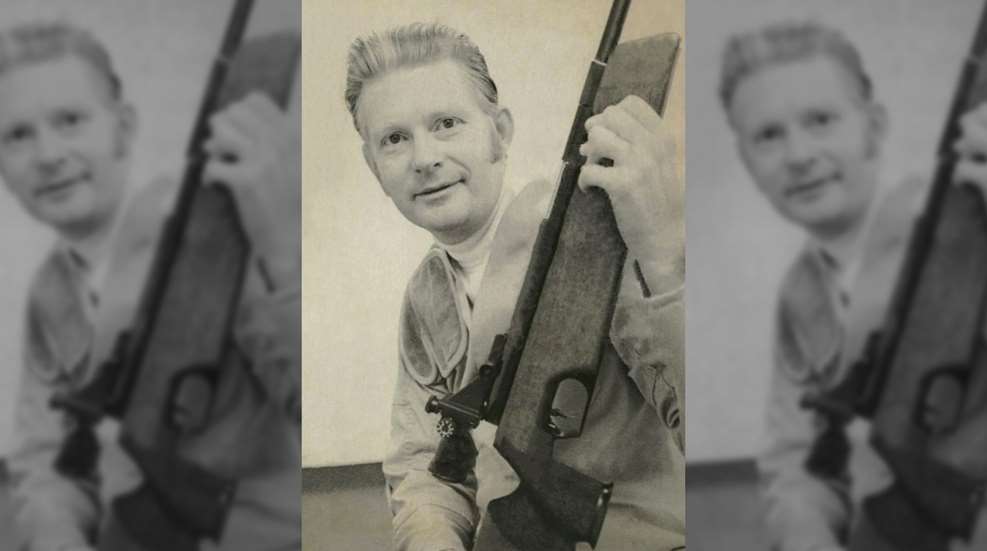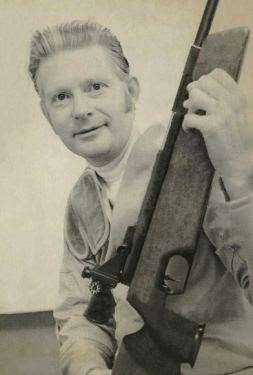
The below is an excerpt from the 1978 book, Olympic Shooting, written by Col. Jim Crossman and published by the NRA. Read Part 1.
1968—Mexico City (Part 2)
By Colonel Jim Crossman
Mexico conducted "Little Olympics" in 1967 to train key people and to give some foreign shooters a chance to perform at altitude. The coach of the German team, writing in International Shooting Sport, the journal of the International Shooting Union, after the matches, noted that rifle and pistol shooters would have to speed up their shooting somewhat, since a lungful of air did not last as long as at sea level. He timed a number of shooters and found that they all had to speed up at the high altitude.
In addition, there were some ballistics effects of the thinner air to be considered.
While it was possible to show that the time of flight, bullet drop and wind effect would be different, it did not seem likely that rifle and pistol shooters would be particularly bothered. Probably they would adjust rapidly to any minor differences.
With the thinner air giving less resistance, bird speed was certain to be different.
The situation was different with the shotgun shooters. Speed of the clay bird could be expected to be different in skeet, since the trap location, the height of the bird at the crossing point, and the distance the bird was thrown were all fixed. With the thinner air giving less resistance, bird speed was certain to be different.
The same thing was true of the trap bird, but to a lesser extent. While it was expected that the skeet shooters might have to make some minor adjustments in technique, it did not seem likely that trapshooters would be too much concerned with changes in bird flight pattern.
The thinner air would produce a different effect on the flight of the shot charge. With less resistance, the charge would not be slowed quite as much, giving a higher striking velocity and a higher average velocity, since muzzle velocity would remain unchanged. However, more effect was expected on the pattern density, since there would be less tendency for the shot to spread.
This was verified by tests by two ammunition companies which showed that pattern count could be expected to be 10 to 25 percent higher at the altitude, depending on the gun and ammunition combination. To get pattern sizes back to the usual figure, it was arranged with one ammunition company to load skeet and trap loads using a wadding system designed to open up patterns.
The discussion and fuss about the effects of high altitude was of no concern to countries where an appreciable part of the population lived in the thinner air—Mexico, for example. But it was of concern to the United States, since Americans tend to keep to the low ground. As a result of the concern of the low-land countries, the International Olympic Committee authorized two weeks of additional training.
The U.S. Olympic Shooting Committee decided to take the shooting squad to altitude for a couple of weeks of training before going to Mexico. The NRA International Shooting Committee agreed and obtained the extra money required to take both team members and alternates to training, and to take some additional support people to Mexico City.
Practical problems got in the way. The greater part of the U.S. population, by far, lives at relatively low altitudes. In fact, only 15 of the 50 states have any point in their boundaries above 7,000 feet. Generally, all the country east of the Rockies is below 7,000 feet and only the 15 states west of the Rockies (including Alaska and Hawaii) have high altitudes. Of the 50 largest cities, only two—Denver and Los Angeles—have any part higher than 5,000 feet. Denver is generally high, but Los Angeles is mostly low, with only a peak or two at 5,000 feet.
So where would you find training sites at 7,800 feet?
Laramie, Wyo., is the biggest, highest town, but Santa Fe, N.M., is only slightly lower and is considerably larger—nearly twice—with a population approaching 50,000. Big towns were important, only because they were more likely to have the living and training facilities needed. After due consideration and in view of the generous offers of assistance made by the Santa Fe people, the capital of New Mexico was chosen.
With plans well in hand for training, it was time to consider the team itself. It was expected that the backbone of the team would come from the Services. A young shooter who came into Service with a bit of experience and ability could be made into a first-class shot through the coaching, training and competitive experience given by the several Service marksmanship units. Many Olympic shooters reach the top by this route.
The civilian shooter has a tough problem in making a team of this sort, due to the time and cost involved.
The civilian shooter has a tough problem in making a team of this sort, due to the time and cost involved. He must train and practice on his own time and at his own expense through the local preliminary tryouts and then the several-day final tryout, probably located some distance from home. Having made the team, he must practice at his own expense until the official training period starts; then he must give up two weeks of his time, plus the month's time at the Games.
With all these problems, it is pleasantly surprising that so many civilians go all the way to the Olympic final tryouts.
A series of preliminary tryouts over NRA-modified courses was held throughout the country. The U.S. Olympic Shooting Committee then issued invitations to winners of preliminaries and past members of international teams to compete in the final tryouts, at which time Olympic team members would be picked as well as the U.S. champions in Olympic and other international events.
The final tryouts and U.S. championships were held around San Antonio, Texas. The rifle and pistol matches were divided between Lackland Air Force Base and its subsidiary ranges at Camp Bullis. Shotgun events were held on the grounds of the new Texas International Gun Club.
When the final results were published, the Olympic squad included one civilian, one shooter from the Navy, one from the Marine Corps, one Army National Guard, three shooters from the Air Force and five from the Army. The chosen few were:
- Gary L. Anderson, Free Rifle and English Match
- John R. Foster, Free Rifle and Smallbore Rifle 3-Position
- Thomas I. Garrigus, Clay Pigeon
- Donald L. Hamilton, Free Pistol
- Earl F. Herring, Skeet
- William W. McMillan, Rapid-Fire Pistol
- James H. McNally, Rapid-Fire Pistol
- Robert D. Rodale, Skeet
- Larry R. Stafford, Clay Pigeon
- Arnold Vitarbo, Free Pistol
- Lones W. Wigger, Jr., English Match
- John H. Writer, Smallbore Rifle 3-Position
Each squad would be limited to two shooters per event, with a maximum squad size of 12. If the United States was going to shoot all seven events, someone would have to shoot in two events. Usually the rifle shooters would double up, and that is the way it was worked out in Mexico. Anderson and Wigger shot the English Match, Anderson and Foster shot the free rifle, and Foster and Writer shot the smallbore rifle 3-position match.
Many nations followed this same general scheme, although it varied with the size of the squad and with the shooting talents available.
For a while we thought we might have first—the first woman to shoot on a U.S. Olympic team. Not that having a woman on a U.S. shooting team was new. My mother, Blanche Crossman, had been the first woman to shoot on a U.S. international rifle team, way back in 1919 and 1920. Since that time, other outstanding women shots have been on international teams, but 1968 was the first year that women were allowed in Olympic shooting competition.
Read Part 3 of our look back at the Mexico City 1968 Olympic Games. Subscribe to the free Insider newsletter for the latest updates.

Photo: Gary Anderson is pictured here in a 1976 archive photo. At the Mexico City 1968 Olympic Games, Anderson won a gold medal in the 300-meter rifle event.
Read more: Rome 1960 Olympics: 100% Improvement, One Plus One



































